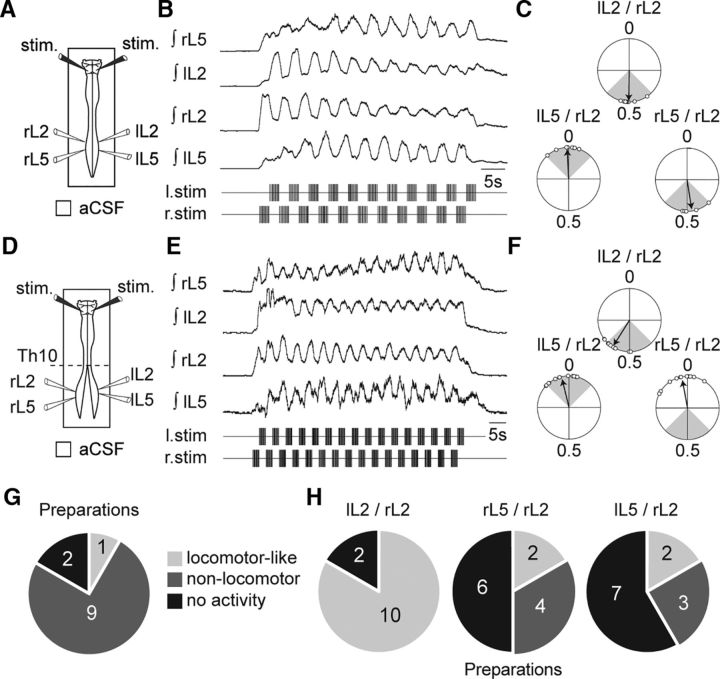Figure 11.
Lumbar commissural pathways are required to set the locomotor timing of extensor-related bursts during the RSP. A, Schematic of experimental procedure. B, Integrated activities of lumbar ventral roots induced by the RSP in the control condition. C, Circular plots from the same recording indicating the phase relationships between lL2 and rL2 (top) and between right and left L5 and rL2 (bottom) activities. The location of the mean vectors (black) in the gray-shaded areas indicates the locomotor nature of the expressed pattern of activity. D, Schematic of experimental procedure showing the midsagittal split of the lumbosacral spinal cord (from Th10). E, Integrated activities of lumbar ventral roots induced by the RSP from the same preparation as in B after the split. F, Same as C after the sagittal split. Note that although the RSP still triggers a rhythmical activity, the loss of alternation between rL5 and rL2 activities highlights the loss of locomotor-like activity. G, Circular chart indicating the proportions of preparations (n = 12) that expressed locomotor-like (1 of 12), non-locomotor-like (9 of 12), and no activity (2 of 12) following the sagittal transection. H, Proportions of preparations that displayed locomotor-like phasing between pairs of ventral root activities. Note that most of time the bilateral L2 alternation was maintained (10 of 12), while the locomotor phasing between L5 and L2 activities (10 of 12), was lost after the split.

